Some blokes like being part of a crowd and some like being a bit different. Bruno D’Agostino is a dead cert for the second group. When Bruno decided to make his mark in street machining, the first thing he did was research.
First published in the June 1992 issue of Street Machine
His research took him as far as his extensive library of hot car mags, which he searched for the least common, but tasteful, options. He was checking them out to see which cars weren’t there. His choice was made after he laid eyes on just one tasteful Statesman in all those mags.

It’s a wonder Statesmans (Statesmen?) aren’t more popular. They’re big, they come with power everything and they can demonstrably be done up to turn a few heads into the bargain. Even if you’re only concerned with performance in the form of quarter-mile runs, their mass and length can be a real plus in the stability department.
Bruno’s sort of in the middle. He’s built a car that’s no limp wrist in the performance department, which is tastefully fast into the bargain, and is a pleasure to drive for occasional street use.
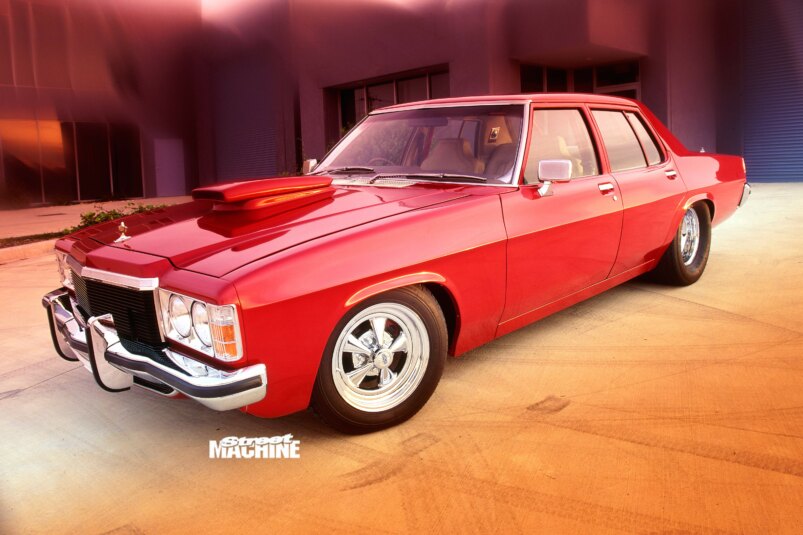
The ’75 HJ Statesman’s stock 308 went a few rounds with ace Victorian drag race mechanic Paul Rogers. The bottom end has been balanced, runs competition bearings, crack-tested rods with high-tensile rod bolts, and L34 pistons.
The Crane cam is driven by a Jackson gear drive. This eliminates minute variations in the cam timing caused by timing chain flex, even under the most radical driving conditions. Lifters are Rhoads anti-pump-ups, and Yella Terra roller rockers activate stainless valves.

On the induction side, twin 600cfm Holleys sit atop a Cain tunnel ram manifold. An electric fuel pump ensures adequate juice delivery to the system and copious quantities of braided line keep the fuel secure. Braided line is in fact used everywhere inside the engine bay, which is detailed to the max.
Exhaust exits through a stainless-steel 3-inch system. It’s worth remembering that a single 3-inch pipe has 12.5 percent more cross-sectional area than a dual 2-inch system – and that means 12.5 per cent more flow, provided the mufflers are suitably free-flowing. Another plus is that it’ll seem quieter because all the exhaust pulses are exiting through the one pipe. Other sensible mechanical choices include a five-core colour-matched radiator and thermo fan, and a high-volume oil pump.
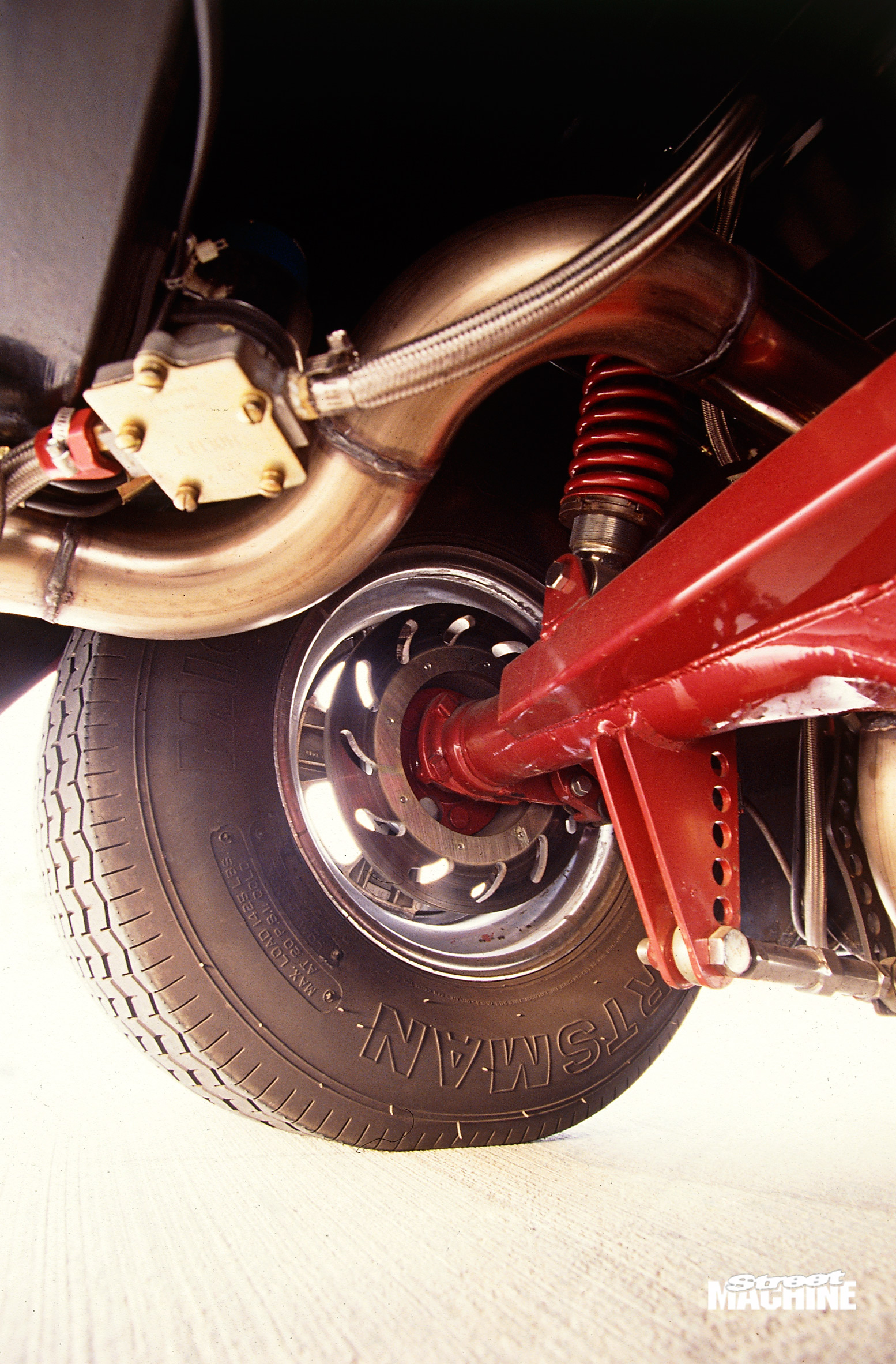
Transmission is Turbo 400, plus a Stage II shift kit and Quicksilver shifter. A 2400rpm stall converter drives the tranny off the stock flexplate. A 3-inch custom tailshaft then dumps everything into a Ford 9-inch diff with Richmond 4.11 gears, a mini spool and 31-spline axles. Now a mini spool, which locks up the rear axles, can make life a tad unpleasant on the street, particularly during U-turns and other manoeuvres where relative axle movement is a plus. But on the strip, it’s a definite bonus. There’s no traction lost to the wheel with the worse grip because torque is split 50/50, so you tend to travel in more or less a straight line off the mark.
Brakes are discs all round, stock HJs at the front and custom cross-drilled discs with Ford callipers out back. Suspension mods at the front are pretty minor, running to Selby lowered heavy-duty springs, Koni adjustable shocks and a Selby anti-roll bar. Major changes, in the form of a custom four-link set-up with Koni coil-overs and tubs to match, have however taken place in the rear end. The wheel-and-tyre combo is very Pro Street with Michelins on Cragar SS 15×6-inch wheels up front and huge Mickey Thompson 29×15.5-inch hoops on 15×10 Cragar SS rims planting down the power.

Panel and paint was handled by a bloke named Bill Johnson. The body was pretty good for a car that’s 17 years’ old, meaning plenty of work was necessary to lift its game up to the standard in the photos. Apart from straightening and aligning all the panels, Bruno decided he liked the clean look, so all the badges with the exception of the bonnet emblem were removed.
Bill mixed a custom red, so it doesn’t have any sort of proprietary name, and he chose to spray it in acrylic. The roll cage was welded in place with the interior out and was then colour matched to the outside.
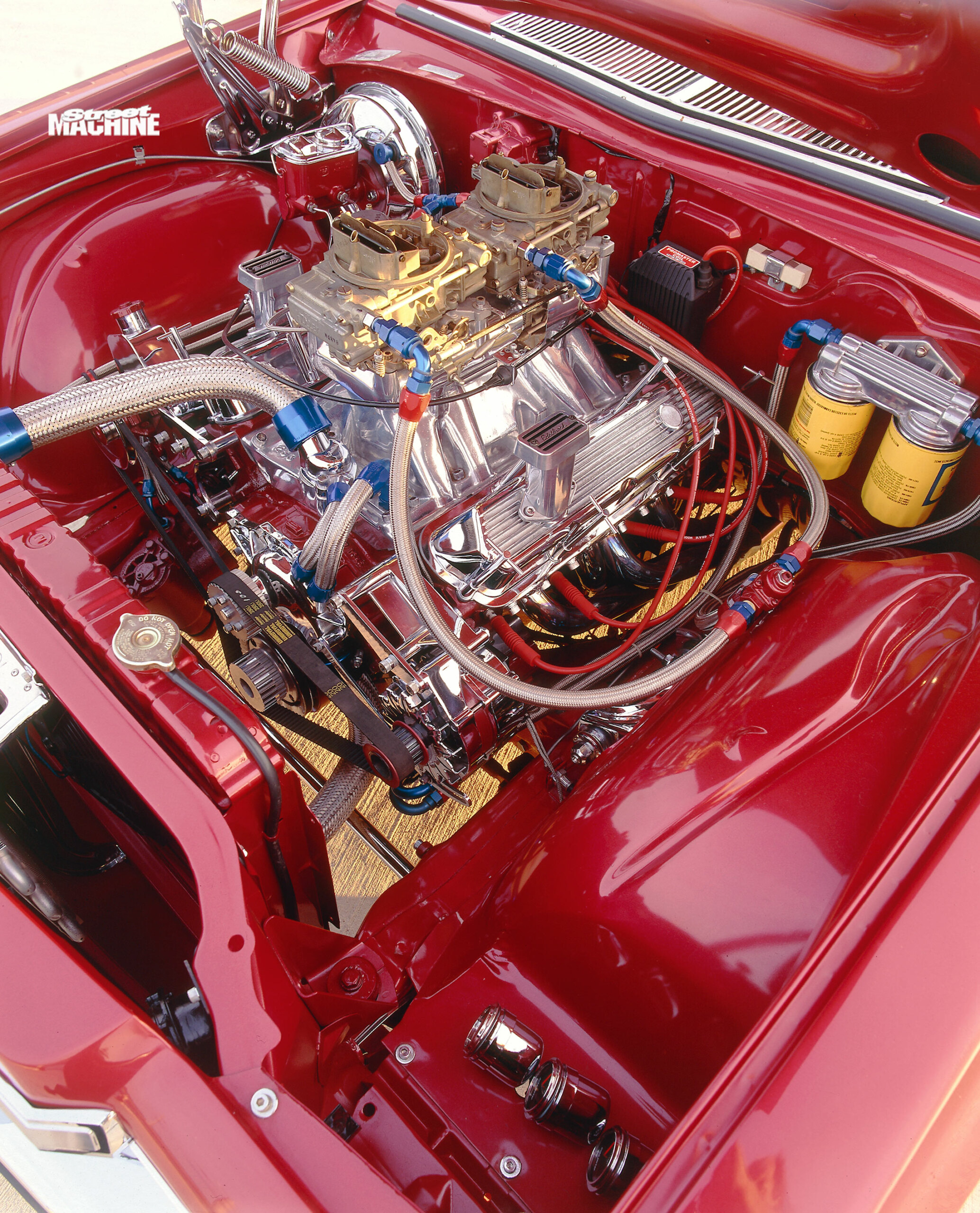
Reservoir Motor Trimmers took care of the interior. The stock seats were retrimmed in beige leather. The rest of the interior is pretty much stock with the exception of a Pioneer stereo and a selection of Auto Meter gauges.
Bruno reckons he’s fortunate to have the support of Tania, his exceptionally patient girlfriend. So his next project is “to relax” and presumably pay more attention to Tania.

Bruno D’Agostino
1975 HJ Holden Statesman
| Featured: | June 1992 |
| Cool info: | Prominent Victorian drag racing mechanic Paul Rogers was chosen to throw everything into the 308 |
| Paint: | One-off red acrylic |
| Engine: | Holden 308ci V8 |
| Gearbox: | TH400 auto |
| Diff: | Ford 9-inch, 4.11:1 |
| Wheels: | 15×6 & 15×10-inch Cragars |
| Interior: | Integral roll cage, beige leather trim, Pioneer tunes, Auto Meter instruments |
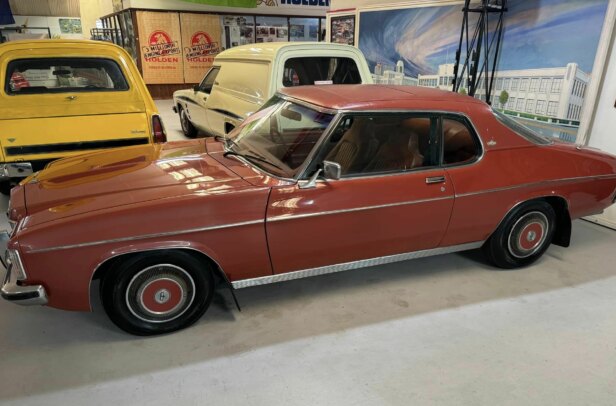
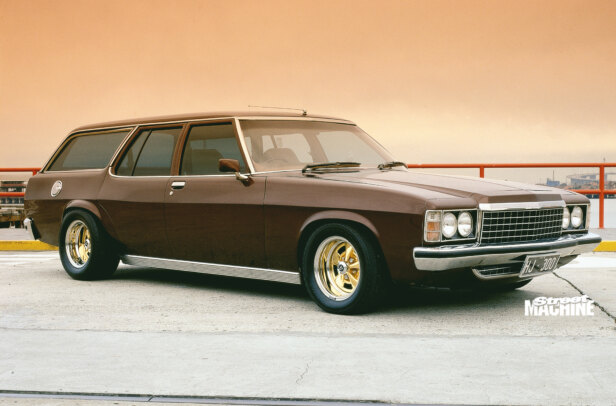
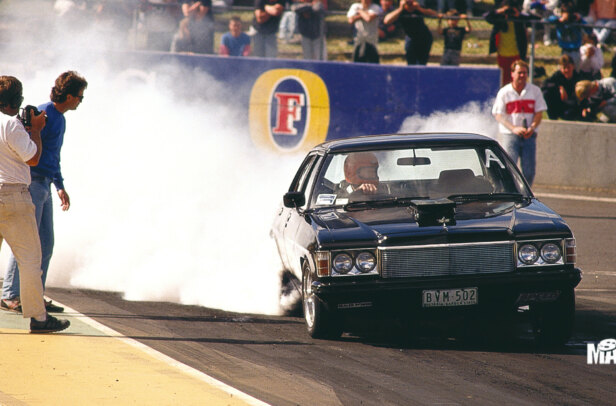
Comments